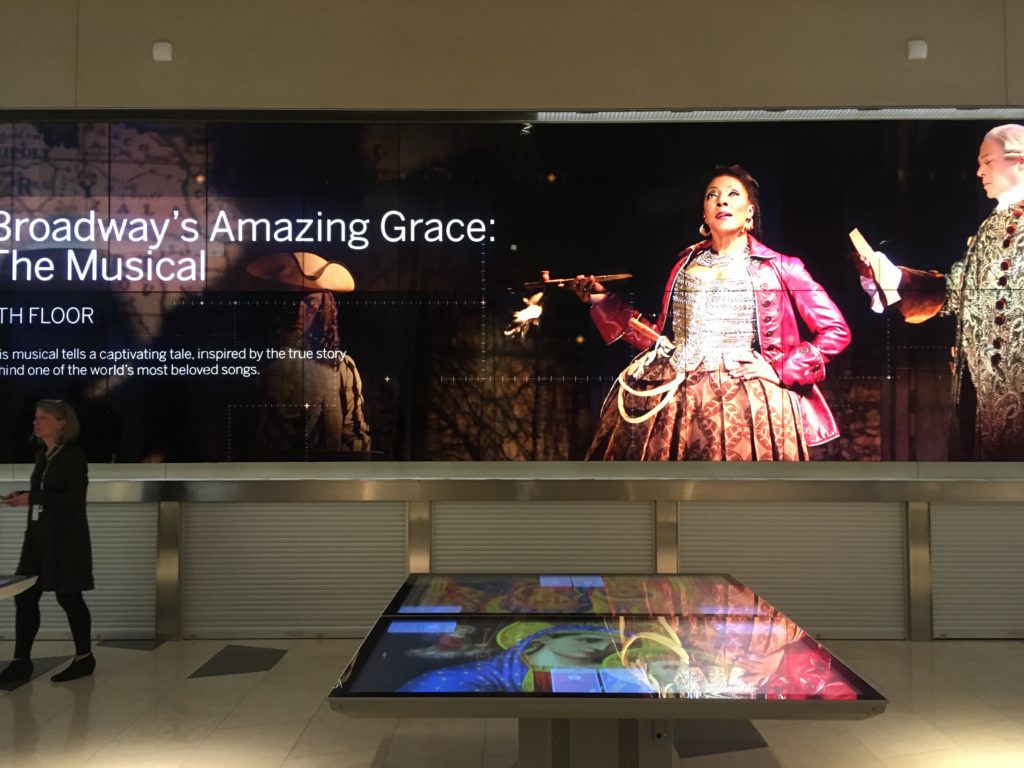Museum of the Bible: In the Beginning …
By • November 20, 2017 0 618

In the beginning — that is, seven years ago — Museum of the Bible (no introductory ‘the’) was created as a nonprofit by Steve Green, evangelical billionaire president of arts-and-crafts retailer Hobby Lobby. The following year, the museum and its proponents gave a presentation of their vision to supporters, as well as to scholars and religious leaders, at the Vatican Embassy on Massachusetts Avenue. In 2012, the former Washington Design Center building, once a refrigerated warehouse with an entrance for freight cars, was purchased for $50 million.
And it was so.
The museum’s architects, SmithGroupJJR — the firm’s resume includes the International Spy Museum and the Smithsonian’s National Museum of African American History and Culture — began working with D.C. government and numerous contractors to get the work done on the landmarked building in 2014.
Completed in less than three years at a cost of more than half a billion dollars, with some 600 workers on site during the peak of construction, the edifice, two blocks south of the Smithsonian’s National Air and Space Museum, presents itself as more than a shrine to the most influential book in Western Civilization.
And it was good.
The museum is not without its critics, who question the motives and politics of its backers. And the company associated with it has been fined for procuring antiquities from illegal sources. Nevertheless, the 430,000-square-foot museum is here, and has left no stone unturned in its efforts to establish its nonsectarian character (a shift from the original mission) and scholarly credibility.
At the entrance stand the Gutenberg Gates, 40 feet high and containing the first 80 typeset lines of Genesis in the Catholic Latin Vulgate Bible, printed by Johannes Gutenberg more than 500 years ago. As an homage to the printed word, the bronze panels depict the letters in reverse, showing that the museum is also about the power of the book (in this case, the Good Book).
On the first floor, a grand hall greets the visitor with illuminations to the side and above. Art glass and a massive digital LED ceiling show images of the Sistine Chapel and the like. Near the orientation wall, gift shop and ticketing window, one gallery holds artwork on loan from the Vatican Library; another displays items from the Israel Antiquities Authority. There is also a children’s area, known as Courageous Pages, about Bible stories.
In the open, sun-lit escalator hall, guests get ready for the bulk of the displays on the three floors above. A state-of-the-art handheld digital guide (expected to be up and running at press time, or soon after) is activated at seven touch tables. Complete with earpiece, the guide will plan out a personalized itinerary and provide additional audio and video information in the galleries.
On the second floor, the impact of the Bible is conveyed in exhibits that are almost overwhelming, covering its place in the world, justice, science, language and the calendar. The section on the Bible in America leads visitors through the Great Awakening, abolition, the Civil War and the civil rights movement. Interactive tables abound. “Washington Revelations,” a motion-simulator experience available for a fee (admission to the museum is free), takes guests on a ride through Washington, D.C., revealing the Bible’s presence in monuments and inscriptions.
On the third floor, dedicated to the stories of the Bible, there are gateways to three theme-park-like immersive experiences with narration and special effects, titled the Hebrew Bible, the New Testament and the World of Jesus of Nazareth.
On the fourth floor, the history of the Bible is traced, beginning as oral tradition in the Fertile Crescent and moving through the languages and worlds of Hebrew, Greek, Latin and English. A scribe is seen transcribing the Torah — with 200 retired Torah scrolls on climate-controlled shelving nearby.
On the fifth floor is the 472-seat World Stage Theater, with walls that can be digitally illuminated. The Broadway musical “Amazing Grace,” about the composition of the hymn by a former slaveholder, is being presented through Jan. 7.
On the sixth floor, the top, there is a ballroom, a Biblical garden and Manna Restaurant, run by chef Todd and Ellen Gray. The skylight design is meant to evoke a boat on the Sea of Galilee, the ark and an open book. From here, one has views of the National Mall, the U.S. Capitol and beyond.
And so we rested — there is no seventh floor, after all, though the museum has a mezzanine (with the Milk & Honey café) and a basement for a temporary exhibitions.
D.C.’s newest museum is a massive and monumental place where all Americans — believers of every denomination, the lukewarm, even the scoffers — will learn something new and fresh about the book that has so influenced our nation, from early European settlement to independence and during the many struggles and triumphs since.

